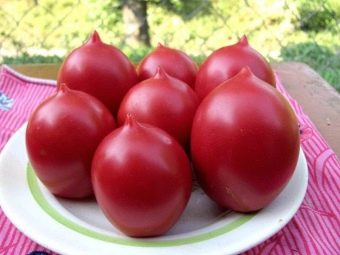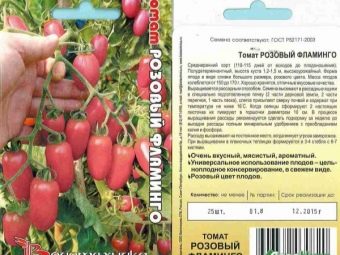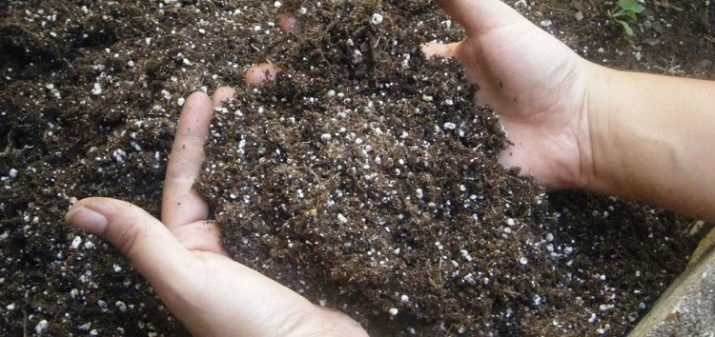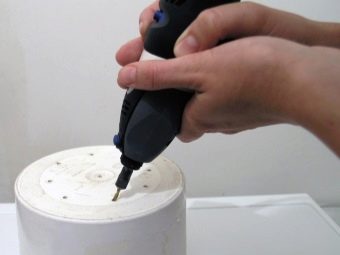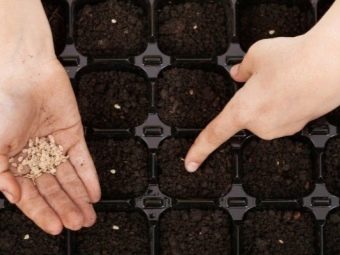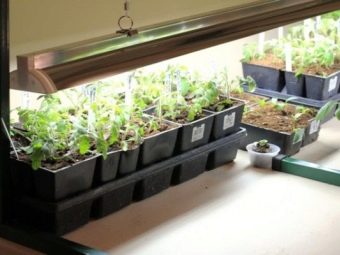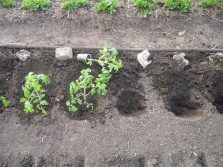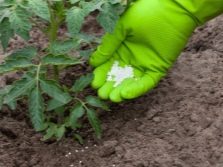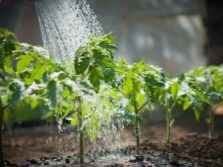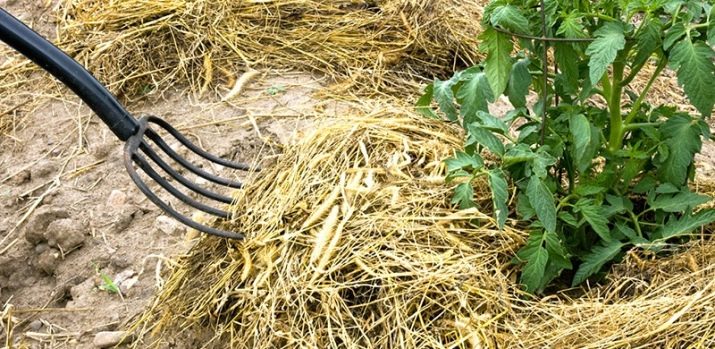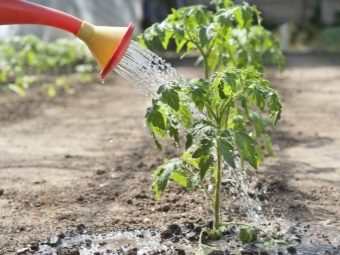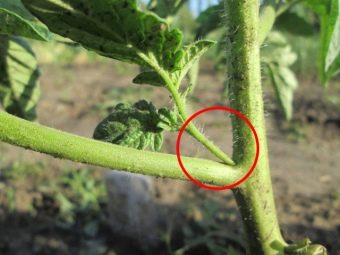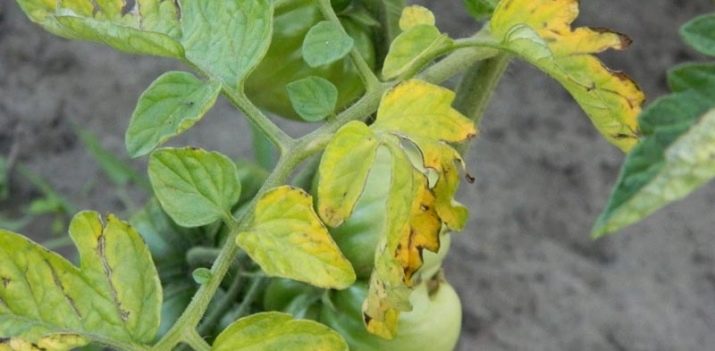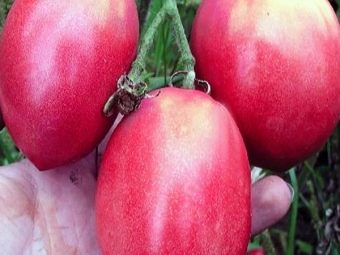Pink Flamingo Tomato: variety description, yield and cultivation
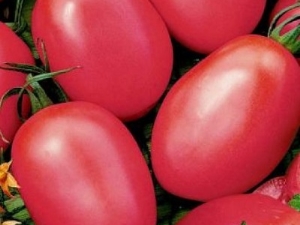
There are no land owners who would not like to get a big harvest. But to achieve this, it is not enough to make a lot of effort and work for a long time.It is important to understand the characteristics of each variety of cultivated plants.
Specifications
The pink flamingo tomato does not just allow growing juicy and ripe fruits: it has an extraordinary external elegance. For sowing, it is recommended to collect ripe seeds on the second and third racemes. Even when the fruit is cooked, the taste will change, but it will not get worse. It should be borne in mind that this is not a hybrid variety of tomatoes, but a representative of the so-called “clean line”. Otherwise it would be impossible to re-grow the seed.
Speaking about the classification, it should be noted that the "Pink Flamingo" is an indeterminate plant. The shrub develops continuously with the formation of ovaries and after harvesting. Only uprooting tomatoes, you can stop their growth.
Hence the characteristic feature - the garter should be made already when the plant is in the low sprout phase. Since the whips grow to a height of 2 m, it will not work without the formation of bushes.
If you refer to the official description of the variety, you can find out that it is classified as mid-season. From the appearance of the first shoots to the ripening of red fruits, 110-115 days pass. But this is conditional, because under favorable conditions, the crop can be harvested after 95-100 days. Most of all, the berries resemble plums of large size, are distinguished by moderate density. A characteristic feature of this particular variety is the absence of a green spot where the stem is attached.
The fruit is always painted in a uniform color, the weight of one tomato ranges from 0.14 to 0.2 kg. Accurately characterize the color will not work, because it is strongly tied to the growing conditions. Productivity - at a decent level, some berries reach 0.4-0.45 kg. Most of the large fruit falls on the first harvest. But even for the rest of the season, tomatoes are not the smallest, as is sometimes the case with other varieties.
How to grow?
Growing tomatoes, even when it comes to the best varieties, cannot be easy. "Pink Flamingo" is quite capable of giving decent seedlings, but first it is necessary to work.
Poor or poorly supplied with useful substances soils need to be fed. This should be done at least one month before disembarking. Ideal soils are loose because access to water and air is critical.
Optimal seedling precursors (in the same soil) - peas, carrots (any), beans or beans. You can dig seeds into the soil from April 1 to April 10. And experienced gardeners generally set limits for themselves in the last days of March. Before dredging, the seed is kept for 12 hours in a solution of potassium permanganate. Such primary disinfection significantly reduces the risk of plant pathologies.
Judging by the reviews, for planting "Pink Flamingo" are well suited:
- rectangular boxes;
- large vases;
- individual pots;
- gardening cassettes;
- polyethylene bottles with a cut top;
- plastic cups.
Any container should be disinfected, then wipe it thoroughly. Before laying the ground holes are prepared for drainage. If you do not take care of them, you can face the stagnation of water and rotting of the root system. Containers are filled either with their own hands or with purchased earth. On its surface layer draw furrows up to 10 mm in depth, which are filled with wet seeds.
It is recommended not to concentrate them, but to distribute them more uniformly.
If the seeds are spread out at a distance of 30-50 mm from each other, they will not create problems either when the seedlings are cultivated or when they are transplanted into open soil. Once the seedlings are placed, the soil is sprayed with a spray gun and then covered with plastic wrap. In the absence of such, you can use regular packages. The best temperature for growing seeds is 25 degrees Celsius.
The lighting should be moderately intense, because both the excess and the lack of it are detrimental. Under normal conditions, we can expect the emergence of sprouts for 5-7 days. One has only to hesitate how to remove the film immediately and systematically lower the temperature to 15-18 degrees. At the same time, they increase the intensity of the backlight, but also smoothly. After the sprouts come out, the heating is reduced to 10 degrees and turned at least once every 72 hours.
This technique allows you to avoid misalignment of seedlings in one direction. When it comes time to transplant plants - and this is evidenced by the appearance of 2 developed leaves on the sprouts, from the pot they are moved into cups. Then, when the bushes reach a normal value, they will not need to extract and violate the integrity of the roots. It will be enough to place on the decorated bed. The paper or peat shell will decompose into substances that are valuable for growing tomatoes.
Transplantation into the open land or into the greenhouse space takes place at 65-70 days after germination. All prepared pits are supplemented with 30-50 g of humus mixed with mineral phosphate fertilizers. The recommended gap between the bushes is 0.3 m, and the rows are removed exactly 0.7 m. Then it will be much easier to care for the plantings and harvest. Attaching plants to the support should be moderately rigid, so that it is not fixed tightly and does not move.
When the bushes begin to stretch upward, you should immediately remove the side stepsons and direct the tomato to form a common stem. Even when the soil was planted before planting, it is desirable to fertilize several more times. The first additive is laid out on the 14th day after entering the free soil. Depending on the type of soil and the specific situation, apply either ammonia or phosphate mixtures. Then feed the tomatoes monthly until the end of the growing season; organic fertilizers give a good result.
Any dressings are made only after thoroughly moistening. Everyday watering should be not so powerful, but frequent. Like any other tomato varieties, “Pink Flamingo” will be delighted with the water that has been pre-settled and heated in the sun. Watering with cold liquid significantly undermines the vitality of the plant and can even lead to illness.
Given the high risk of sunburn, the plants should be watered when the sun is still (or already) standing low above the horizon and sending the least direct rays.
It is necessary to mulch and loosen periodically to eliminate the crust formed on the surface, helping the water and air to seep through to the roots. The ideal mulch is straw or completely dried weeds. Gotting helps to achieve a solid harvest, each bush leaves a maximum of five brushes. If you do not follow this rule, you will have to accept the receipt of small fruits. Despite the calmness of the variety, the plants can still suffer from improper care.
A long stay in an excessively damp earth turns out to be very unpleasant in its consequences. The roots begin to rot, after which the leaves turn yellow and fall. After long or intense rains for at least several days, watering is suspended. Be sure to wait for the drying of the earth, and only then systematically return to normal care. Unpleasant consequences can be caused by excessive dryness of the earth.
Love of tomatoes to heat is well known, but still you should not overly rely on it. A common mistake is to place the seedlings close to the heating devices. The air should be fresh, but cool drafts are destructive. Even in a short time they provoke the withering and falling away of the leaves. This knowledge is in most cases sufficient.
Excellent related crops - lupine and alfalfa. Of the additional dressings, bird manure is often recommended.It should be borne in mind that under extremely unfavorable conditions, the time of ripening is extended to 120 days and even a little more. It is recommended to complete the transplant before May 12-15.
In the place where the tomatoes are planted, there should be at least 35 cm of fertile soil. It is necessary to maintain a balance between illumination and density of landing. Of complex mineral fertilizers, magnesium sulfate, calcium nitrate, “Mortar”, and some other compounds give excellent results. Watering is minimized in the first 20 days of growth in open ground. At this time, it can only harm, damaging the tender and insufficiently strengthened root system.
In the initial period, watering is carried out every 7-10 days, making it more or less depending on the weather. When fruits appear, water the tomatoes need every 3 or 4 days in a row. Weak processes are necessarily removed, even if because of this there may be fewer brushes than usual. Such work pays off the increased efficiency of the remaining branches. But in addition to optimal care, we must not forget about the factors dangerous for the plant.
You should not buy seedlings with buds. Assurances of the sellers that this supposedly helps speed up the harvest, are not based on anything. When planting, you must first pour water over the hole and achieve the appearance of liquid dirt. If, however, first plant a tomato there, the earth will seize an impenetrable crust. It can damage the plant very much.
Diseases and pests
“Pink Flamingo” can suffer from blackleg, fusarium and top rot. The likelihood of other disorders is so small that it can not be taken into account. Fusarium tomatoes are infected only from the soil, which was not decontaminated before planting. External signs - the falling away of leaves for no apparent reason and the appearance of brown areas on the petioles. You can save the harvest only until the bushes start to wilt, otherwise the transplant will not help.
The occurrence of blackleg caused by insufficient attention to watering sprouts. Moisture stuck in the soil causes blackening of the lower part of the seedling (hence the name), the leaves become sluggish. There is no chance of getting rid of the disease. Suppress apical rot can only emergency feeding. It is produced by a phosphorus-potassium mixture and wood ash.
The main natural enemies of tomatoes are the spider mite and whitefly. Fighting them effectively without synthetic drugs will not work. The ideal prevention is timely control and compliance with agricultural technology. Experienced owners recommend inspecting the landing at least once a week. And if you do it more often, even every day, there will definitely be no harm.
Virtues
“Pink flamingo” surpasses many other varieties in immunity to pathological conditions and fungal disorders, to the defeat of bacteria. It can be grown throughout the territory of the Russian Federation. Harvested fruits can be stored up to 60 days without fear of loss of their density and deterioration of taste. Ripped off partially ripe tomatoes after aging in a warm room themselves reach the desired condition. Most gardeners do not face problems when they are taken to grow this variety.
Consumers appreciate the culinary merits of the variety, especially in the manufacture of appetizers and salads. For canning it is better suited than other pink tomatoes.
disadvantages
Almost all the negative reviews about the "Pink Flamingo" come from those who grossly violate the principles of agricultural engineering. Problems are associated either with deviations from the normal mode of seedling cultivation, or with errors in the care of a mature bush. The resulting tomato paste and juice are excessively light, although this is largely justified by the taste. The average fee for the year from 1 square. m in the most favorable conditions reaches 10 kg. If the weather is mediocre, you can count on at least 5-7 kg.
See what the “Pink Flamingo” tomato variety is good for in the next video.

